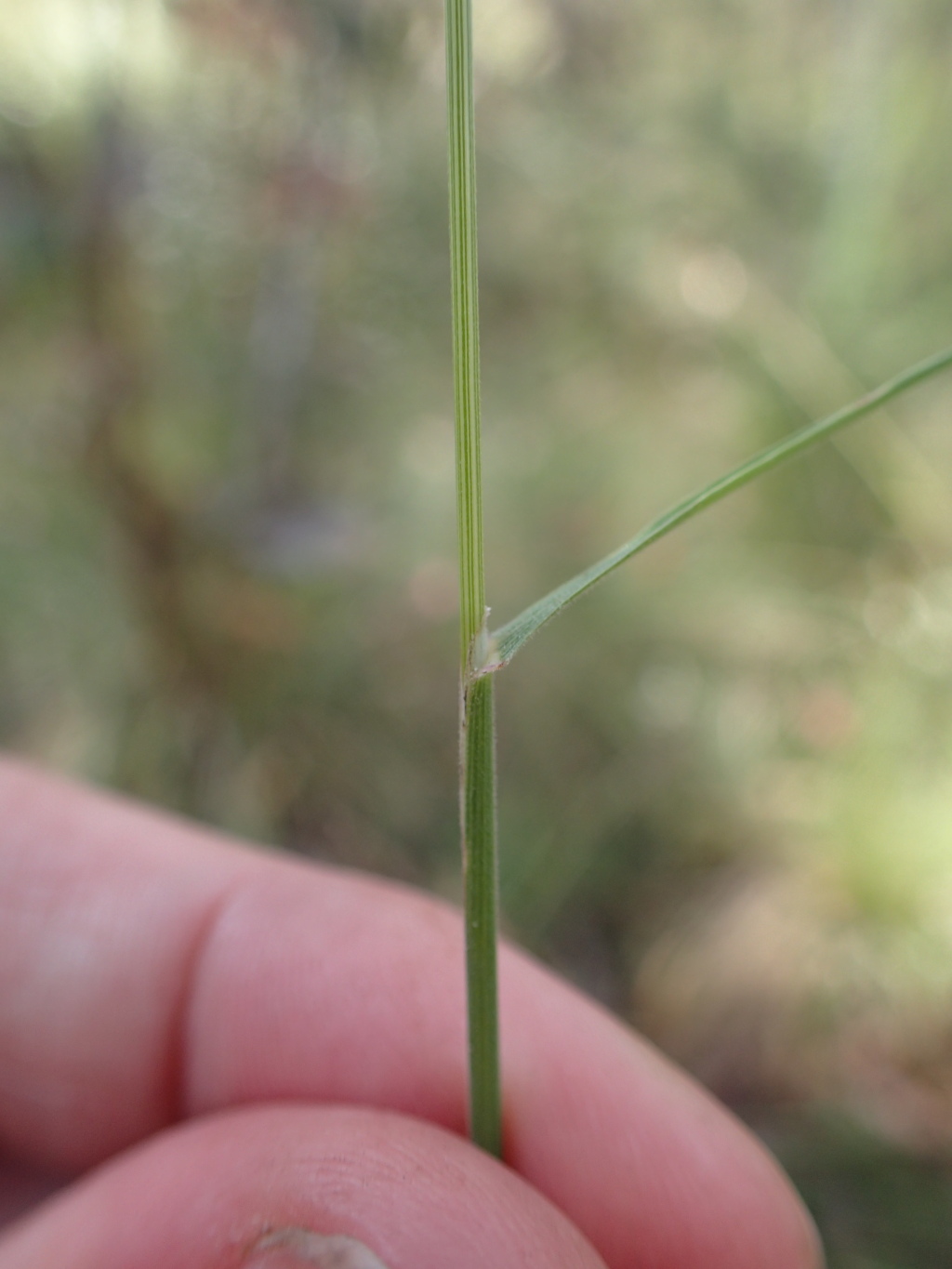Dichelachne inaequiglumis
(Hack. ex Cheeseman) Edgar & ConnorUsually rather fine and delicate, culms ascending to erect, mostly to c. 70 cm high, mostly smooth and glabrous, occasionally with scattered short hairs. Leaves glabrous or with scattered short hairs; blade flat or inrolled, to 20 cm long, 1–3 mm wide; ligule membranous, truncate, 0.1–0.5(–1) mm long. Inflorescence a loose panicle to 20 cm long, usually with rather few, distant, spreading or appressed branches, the longer branches without spikelets in the lower third; glumes acute, 2.5–5.5 mm long, the lower usually shorter than upper by c. 1 mm; lemma exceeding the lower glume by up to 2.5 mm, minutely scabrous; awn usually inserted up to c. 0.5(–1.1) mm from lemma apex, 12–18 mm long, sinuate or weakly twice-bent, not twisted or twisting up to c. 3 times along the barely differentiated column. Flowers Nov.–Mar.
CVU, EGL, EGU, HSF, HNF, MonT, VAlp. Also SA, Qld, NSW. New Zealand. Apparently confined to cool, montane areas (e.g. near Mt Wellington, Brodribb River catchment, Benambra, Playgrounds near the Cobberas).
Plants with small spikelets (c. 4 mm long) are responsible for records of D. parva in Victoria, but they are merely small-flowered examples of D. inaequiglumis. Deyeuxia parva has lemmas about as long as the upper glume and the awn with a well-differentiated, strongly twisted column. It is recorded from Queensland, New South Wales and Tasmania and could be anticipated to occur in Victoria.
Walsh, N.G. (1994). Poaceae. In: Walsh, N.G.; Entwisle, T.J., Flora of Victoria Vol. 2, Ferns and Allied Plants, Conifers and Monocotyledons, pp. 356–627. Inkata Press, Melbourne.
 Spinning
Spinning



